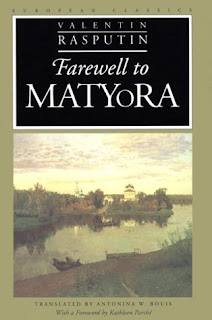The days after November 9, 2016, were unlike any that I can remember. In conversations and on Facebook, people were not simply upset that their candidate had lost. There was a profound sense of disorientation. It turned into a constant refrain: We could no longer recognize the country we lived in. As I began to process my own feelings of shock and horror, I had a sense that for the rest of my life, I would see November 9 as a dividing line between Before and After. I kept thinking of one Russian phrase: perelom soznaniia, a “break of consciousness.”
I found myself thinking of a letter to the editor that I had read in the archives earlier in the year. On February 17, 1986, the Soviet newspaper Izvestiia published an article by Russian writer Valentin Rasputin on the pollution of Lake Baikal by Soviet industry. Lake Baikal is the deepest, most ancient lake in the world, home to flora and fauna that can be found nowhere else on earth. Taking advantage of the new freedom of the press made possible by Gorbachev’s policy of glasnost’, Rasputin described the wanton pollution of the lake and destruction of surrounding forests by a cellulose factory with the tacit approval of government ministers and Soviet scientists. The next day, O.S. Alekseyeva of the city of Nikol’sk in modern-day Ukraine wrote a letter to the editor to respond.
Alekseyeva wrote to describe the “fearful pain” that the article had evoked in her soul. The revelation that an industrial combine was destroying—perhaps irrevocably—a national treasure may be something that might evoke a ho-hum reaction in many Americans today. But Alekseyeva was shaken to her core. She wrote that she could cry from helplessness. The ground beneath her seemed to have shifted: “I remember my Pioneer [Soviet equivalent of Girl Scouts] childhood—how proud we were, how we believed that our country was the most wonderful, where everything is planned, where chaos is impossible.” She wondered if there were still decent people who felt a sense of responsibility towards the present day and the future.
 |
| By RIA Novosti archive, image #793152 / Yuryi Abramochkin / CC-BY-SA 3.0, CC BY-SA 3.0, https://commons.wikimedia.org/w/index.php?curid=19448466 |
Alekseyeva does not seem to have been naive about the Soviet record on environmental protection. In her letter she wrote that she had already been reading for years about “carpet-bagger” administrators (vremenshchiki) who come to a place for a few years, destroy the area’s natural riches, and then retreat, never to be seen again. But, in spite of the evidence, Alekseyeva had been convinced that her country stood for something better. As anthropologist Alexei Yurchak pointed out, “many of the fundamental values, ideals, and realities of socialist life (such as equality, community, selflessness, altruism, […] and concern for the future) were of genuine importance” for Soviet citizens like Alekseyeva, even though these ideals were often violated in everyday life.
Rasputin’s article about the destruction of Lake Baikal seems to have pushed Alekseyeva over the edge, causing her to question her faith in her country to do the right thing. When Alekseyeva read about Soviet administrators and scientists colluding in the destruction of one of the world’s greatest natural wonders, she had to admit to herself for the first time that environmental destruction might not be a bug in the system, but a feature.
Alekseyeva’s situation as she reacted to the willful destruction of Lake Baikal by Soviet industry was perhaps not so different from mine as I reeled from news of Trump’s victory. I thought of Alekseyeva’s evocation of her “Pioneer childhood” a lot this last week. In fifth grade I memorized Emma Lazarus’ poem “The New Colossus,” which is inscribed on the Statue of Liberty: “Give me your tired, your poor, your huddled masses yearning to breathe free.” I grew up believing that we were a country of immigrants, a country that gave my great-grandparents a chance to escape empires (Austro-Hungarian, British) and start a new life. I learned about Martin Luther King, Jr. in school, and heard Barack Obama declare that the arc of history bends toward justice. In undergrad I mentored Somali and Meskhetian Turkish refugees, helping them to apply to college.
Of course I knew that there were deep problems with racism and xenophobia in American society. I’ve watched Sheriff Joe Arpaio repeatedly defy court orders to stop the racial profiling of people of Mexican descent. I’ve seen Flint, Michigan’s orange water on TV. I’ve seen the steady march of reports of police shootings of unarmed people of color. I watched as Trump proposed a Muslim ban, then suggested that all Muslims in America should be forced to register with the police.
And yet, in spite of all evidence, I continued to believe that these were aberrations to be overcome. Yurchak’s description of late Soviet society now sounds eerily close to pre-11/9 America: “For years that system managed to inhabit incommensurable positions: it was everlasting and steadily declining, full of vigor and bleakness, dedicated to high ideas and devoid of them.”
This is why 11/9 was for me a true “break of consciousness.” No matter how bad things got, I had never truly doubted that we shall overcome, someday. Now, I’m not so sure. What’s clear to me now is that there’s no going back to the way that things were before, and maybe there shouldn’t be.


























